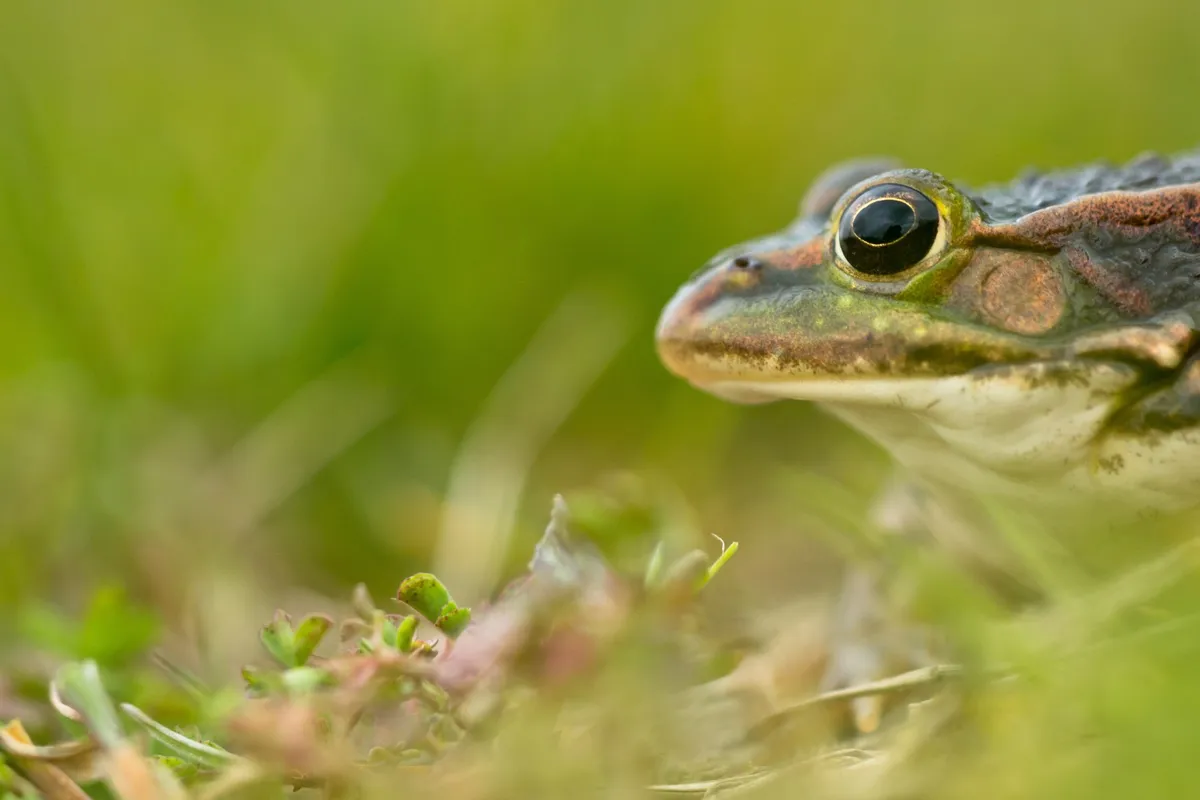The northern pool frog (Pelophylax lessonae) is a paradox, and a very stylish one at that. It is a warmth-loving amphibian indebted to ice – even on summer mornings when its green stripes catch the sunlight, its olive eyes shadowed by dragonflies and reeds.
For its shallow ponds were built by the icy mounds that dotted East Anglia at the end of the Pleistocene, an irony as noticeable as the male’s rusty-wheel churr in the breeding season.
Noisy the pool frog may be, but in one sense it – or at least its true identity – has been very elusive. The pool frog has woven an extraordinary path through scientific understanding; once dismissed as an invasive, its ‘accent’ helped confirm its natural origins, just in time for national extinction and an ambitious rescue.
Pool frog appearance
There is no confusing a pool frog with the common frog that lands with a plop in garden ponds. Always striped, always splendid, in the breeding season the male also wears a pale green skin.
Their calendar is out of sync with their common cousin: the pool frog does not spawn until water warms up in May or June, and it also produces far fewer eggs. This makes it especially vulnerable to dry summers – for the tadpoles to reach maturity, ponds must retain their water until at least mid-August.

A native amphibian
Along with habitat loss from scrub growth, water abstraction was in fact a major reason why the pool frog became extinct in Britain in the 1990s.
Its fate might have been recognised sooner were it not for the confusion caused by humans releasing pool frogs elsewhere in England. Scattered colonies still survive from Kent to Lancashire, but we know now that these are non-native pool frogs from southern Europe.
The Norfolk frog was different: the acoustic signature of its croak and its genetics cluster with Scandinavia, and subfossil evidence shows that they were bathing in British sunlight for the last millennium. So they were indeed a native amphibian.
Subfossil evidence shows that pool frogs were bathing in British sunlight for the last millennium.

The rescue mission
Conservationists decided to bring them back. In 2005, frogs from Sweden were reintroduced to a secret Norfolk site.
Later, eggs were gathered from this population into tanks to give the youngsters a safe start in life – although the tadpoles had to be fed on boiled spinach after they rejected conventional food pellets.
Over 1,000 pool frogs have since been released in Thompson Common in the Brecklands, where their sunbathing and croaks bring magic to the ancient ponds.
